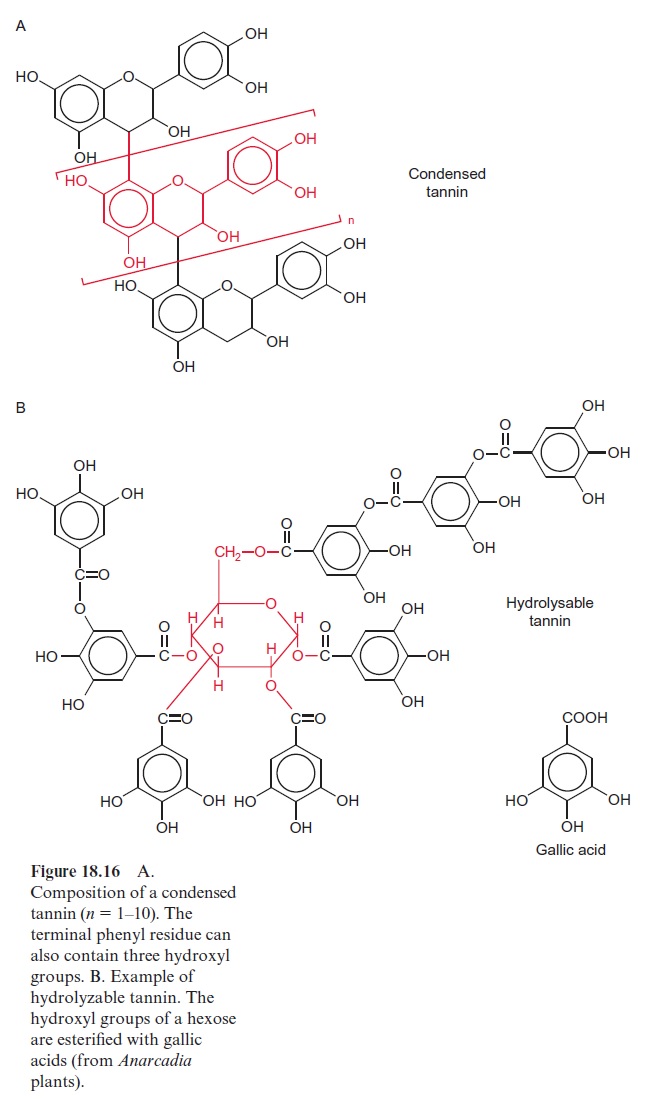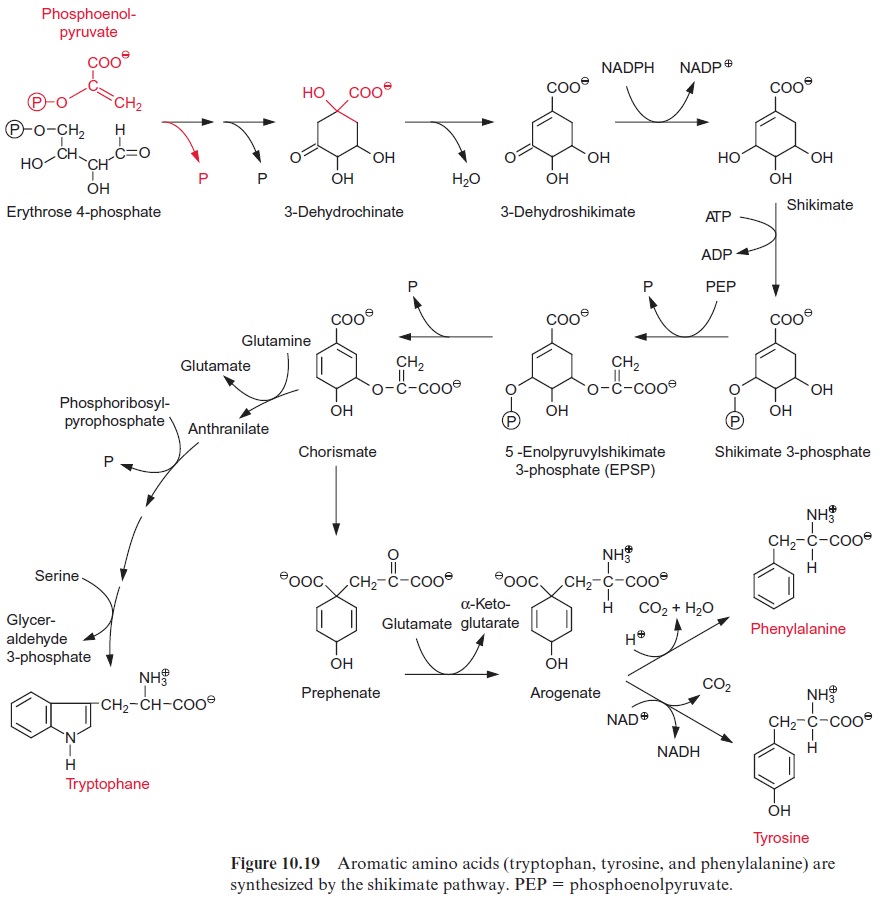Chapter: Plant Biochemistry: Phenylpropanoids comprise a multitude of plant secondary metabolites and cell wall components
Tannins bind tightly to proteins and therefore have defense functions
Tannins bind tightly to proteins and therefore have defense functions
Tannins are a collective term for a variety of plant polyphenols used in the tanning of rawhides to produce leather. Tannins are widely distributed in plants and occur in especially high amounts in the bark of certain trees (e.g., oak) and in galls. Tannins are classified as condensed and hydrolyz-able tannins (Fig. 18.16A). The condensed tannins are flavonoid polymers and thus are products of phenylpropanoid metabolism. Radical reactions are probably involved in their synthesis, but few details of the biosynthesis pathways are known. The hydrolyzable tannins consist of gallic acids (Fig. 18.16B). Many of these gallic acids are linked to hexose molecules. Gallic acid in plants is synthesized from shikimate (Fig. 10.19).

The phenolic groups of the tannins bind very tightly to proteins by form-ing hydrogen bonds with the -NH groups of peptides and these bonds can-not be cleaved by digestive enzymes. In the tanning process, tannin binds to the collagen of the animal hides and thus produces leather that is able to withstand the attack of microorganisms. Tannins have a sharp unpleas-ant taste; binding of tannins to the proteins of the mucous membranes and saliva draws the mouth together. In this way animals are discouraged from eating plant leaves that accumulate tannin. When an animal eats these leaves, the destruction of leaf cells results in the binding of tannins to plant proteins, which renders the leaves less digestible and thus unsuitable as fod-der. Tannins also react with enzymes of the herbivore digestive tract. For these reasons, tannins are very effective in protecting leaves from being eaten by animals. To illustrate this: in the South African savannah, the leaves of the acacia are the main source of food for the kudu antelope. These leaves contain tannin, but in such low amounts that it does not affect the nutritional quality. Trees injured by feeding animals emit volatile ethylene , and within 30 minutes the synthesis of tannin is induced in the leaves of neighboring acacias. If too many acacia leaves are eaten, the tannin content can increase to such a high level that the kudu could die when feeding from these leaves. Thus the acacias protect themselves from complete defoliation by a collective warning system. Investigations are in progress to decrease the tannin content of forage plants by genetic engineering.
Tannins also protect plants against attack by microorganisms. Infection of plant cells by microorganisms is often initiated by the secretion of enzymes for lytic digestion of plant cell walls. These aggressive enzymes are inactivated when tannins are bound to them.

Related Topics